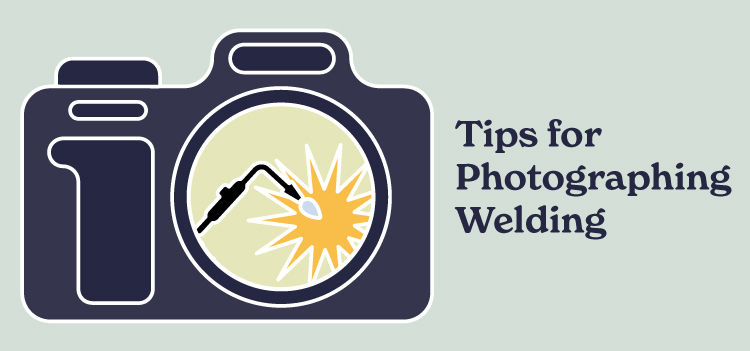This article originally appeared on the Prime Design Solutions website.
Welding is not a common subject for photography, but if you ever get the opportunity to do so it creates very interesting photos. Since you are dealing with exposure to ultraviolet, infrared, and visible light when being around active welding, there are certain precautions that need to be taken when taking pictures. Here are the methods we follow when photographing someone welding.
Protect your eyes
A pair of welding glasses or a welding mask is a necessity in order to safely look at the arc. Flash burn is essentially sunburn to your cornea. Directly looking at the arc can fatigue your eyes and cause temporary blindness in the short term. In the long term, it has the potential to cause cataracts and other problems with eyesight. In order to play it safe, we try and keep an opaque object between our eyes and the welding as well as face away from the arc to minimize the potential danger.
DO NOT look at the arc through a DSLR viewfinder with your naked eyes!
Most DSLR cameras have optical viewfinders (OVFs), which is just a lens showing you the true image beyond the camera. Because of this, it will do the same damage that looking with your naked eye will do. What we recommend is to set up the camera angle with a tripod before the welding starts. Then, have the camera hooked up to an external monitor or use the built-in camera screen to make any necessary adjustments while the welding is happening. Again, DO NOT LOOK THROUGH THE VIEWFINDER! The damage to your eyes will be done by the time you realize it is too bright.
Mirrorless camera caveat
Most mirrorless cameras have electronic viewfinders (EVFs), so in the case of these cameras it is okay to look through the viewfinder, since it is just a screen instead of a clear lens. However, if you are not sure which type of camera you have do not assume your viewfinder is electric because most cameras still come with optical viewfinders.
Protect your skin
Same principles goes for your skin as it does your eyes. It is recommended to have sufficient clothing covering your body due to the UV radiation that comes off of the welding arc. This UV radiation can do the same damage to your skin that UV radiation from sunlight can do.
Camera safety tips
Heat and UV damage is the what most people are concerned with when photographing welding. Some people use a UV filter on the lens, some use an ND filter, others use nothing. There is very conflicting anecdotal evidence online, and most people using filters claim that they are doing it just to take an extra precaution. Lasers have recorded doing more damage to a camera’s sensor, whereas welding has not reported to do much damage. Do some research to see if that is something you need in your camera bag to feel comfortable around welding.
Heat is the main concern with welding
So for that reason, use a lens that can keep you as far away as (reasonably) possible. Use common sense here, if you want to get close up to welding leave your macro lens at home—grab a capable zoom lens, go far enough away from the arc as you can. Sparks from welding/torching/grinding can travel up to 35 feet as a maximum distance. That is somewhat unlikely, but it is just important to note the closer you and your camera are to the welding the higher the chance of getting hit with a stray spark.
Artistic welding photo tips
Don’t be afraid to take pictures other than the welding arc (the bright part of the weld), there is a lot more cool stuff to photograph. Get creative!
- Sparks flying
- Welder’s arm covering the arc with the sparks flying around the subject
- Experiment with different apertures/shutter speeds to play with how the sparks appear on camera
- Light bouncing off the welder’s mask
- Right after the welding stops, while the welding rod and metal are still hot and glowing
Note: While welding is a very bright light source, the luminance it creates falls off pretty fast with distance. You might want to use some diffused flash or stationary lighting to bring out the welder’s face if the environment does not have much light.
All of the methods stated above are written notes of how we feel comfortable photographing welding, and is just to be used as a point of reference. We are creatives, not doctors—it is recommended to do some research on the dangers of welding arcs on the body before putting yourself near active welding.


